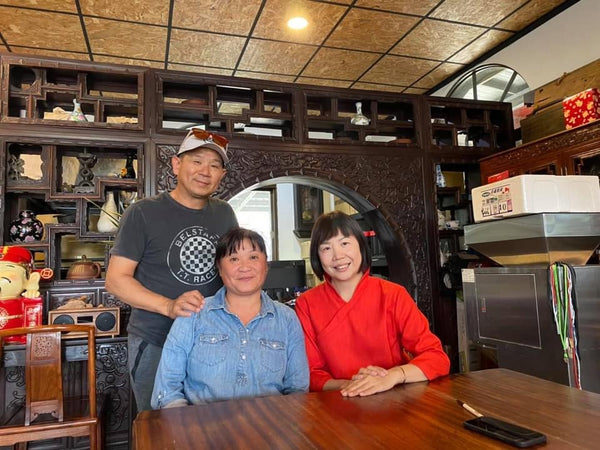In the lush Luye Valley, young Lin puzzled over his steaming cup. "Sifu, how does this oolong tea capture such honey-sweet notes?"
With a playful wink, wise Lao Cha replied, "Ah, Lin, it's the work of tiny artisans – the leafhoppers. They nibble the leaves, prompting the plant to swirl extra sugars into the wounds, weaving a tapestry of honey and ripe fruit into the brew."
Lin tasted again, savoring the layers. "So, the bugs are tea masters too?"
"Indeed," chuckled Lao Cha, "and with their tiny bites, they gift us a sweetness that no human hands could craft."
Red Oolong is a type of heavily oxidized and moderately roasted oolong tea. The technique was developed by Taiwanese farmers and perfected by the Wu family. This Bug-Bitten Red Oolong Tea has been winning the highest award at the iTQi Competition in Belgium consecutively since 2017. Just one sip — and you'll know why.

The tea leaves are bug-bitten – another technique used in Taiwanese oolong production. The tea garden is kept organic to attract insects. When leafhoppers nibble on the tea leaves, the plant's natural defense mechanism releases terpenes that ooze a honey aroma, which attracts birds and scares away the leafhoppers. Furthermore, the plant sends sugars to the bitten areas for fast recovery, creating a remarkable sweetness in the final product. In the meantime, the bug-bitten leaves start slowly oxidizing, even before the processing. Consequently, the tea has the pleasant taste of a deeply oxidized oolong with bright honey and ripe fruit notes.
The Bug-Bitten Red Oolong grows in the Luye Valley of Taitung County, Taiwan. Nestled between two of Taiwan's highest mountain ranges, the valley's pristine nature and fresh air attract many visitors for tea tourism and the annual hot air balloon festival. The Wu family irrigates the tea garden using water from the mountain streams and employs only eco-farming techniques

While it's most common for tea enthusiasts to prepare oolong teas Gong Fu style, Luye Red Oolong is exceptionally lovely when you cold-brew it. In fact, the locals of Luye developed the perfect cold-brewing technique since they frequently bring this tea with them to the area's numerous hot springs.
If you wish to try cold-brewed oolong tea, we suggest following this simple recipe: use about 1 gram of tea leaves for every 80-100ml of water. Fill the teapot with room-temperature water and put it in the refrigerator. It will be ready in approximately 8 hours.
- Place of Origin: Luye Village, Taitung County, Taiwan
- Harvest Date: October 2025
- Picking Standard: One bud and two leaves
- Roast: Medium
- Aroma: Honey and ripe fruits
- Taste: Sweet and roasted, long-lasting sweet finish
- Cultivar: Ruan Zhi (aka Qing Xin / TRES #17)
Brewing guidelines:
![]() 195℉ / 90℃
195℉ / 90℃
 1g per 70-100ml
1g per 70-100ml ![]() 3-5min
3-5min
 1g per 20ml
1g per 20ml ![]() 10sec + 5sec for each subsequent infusion
10sec + 5sec for each subsequent infusion






